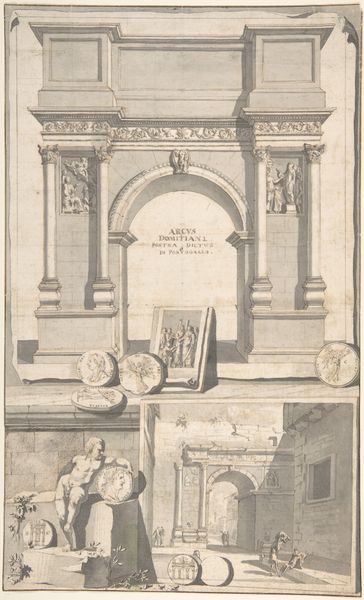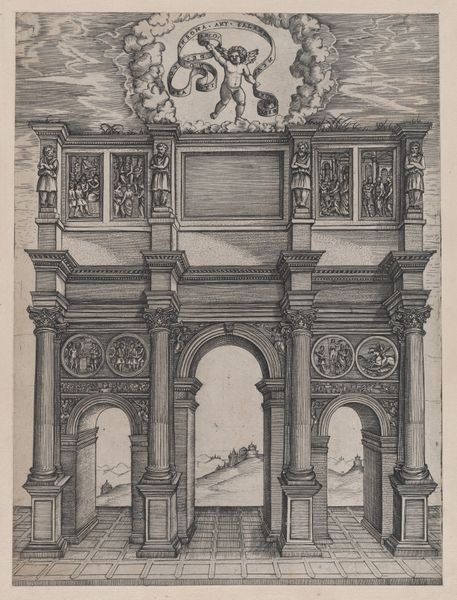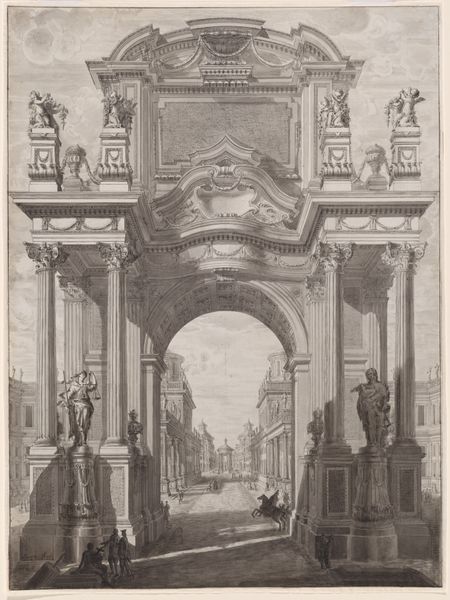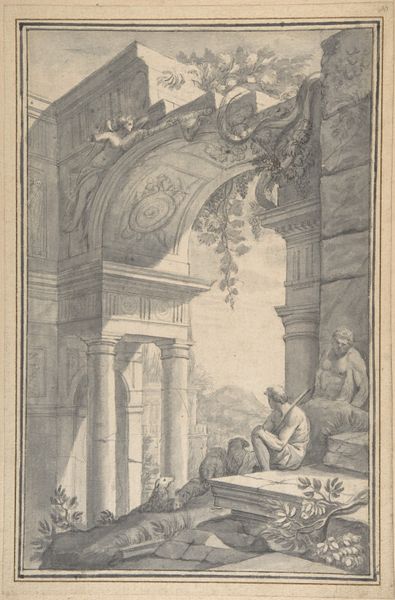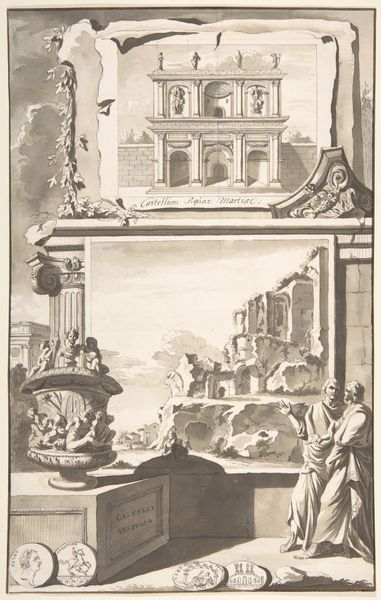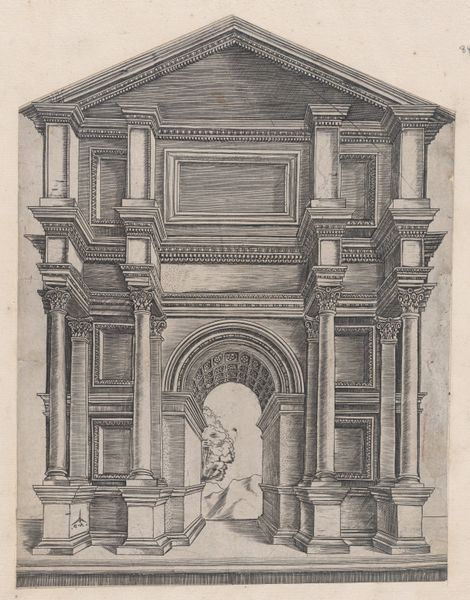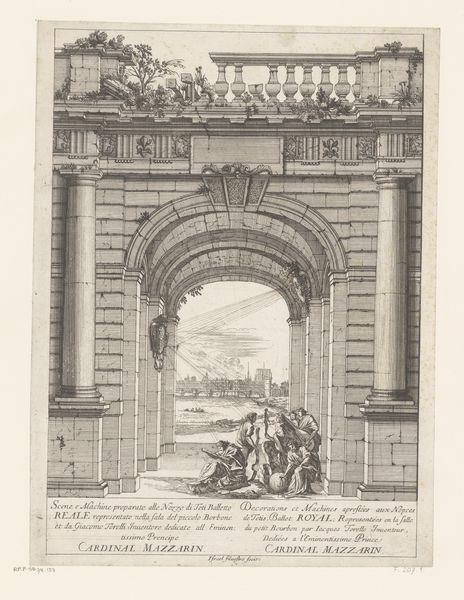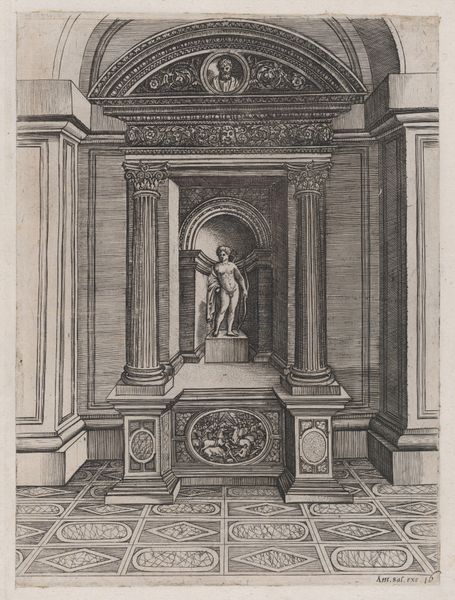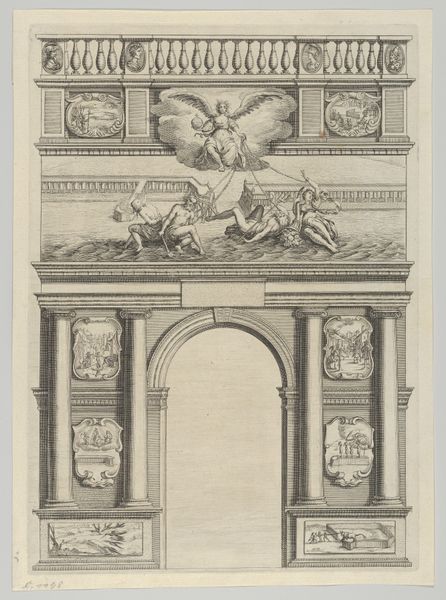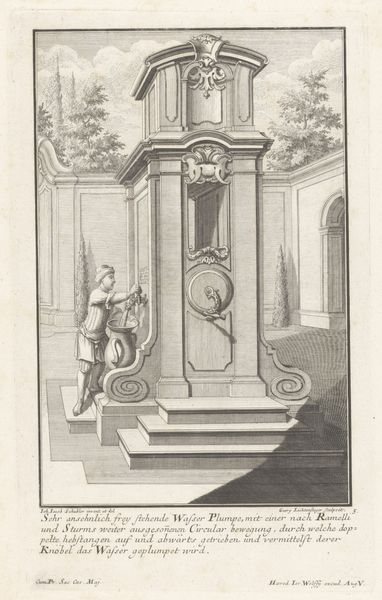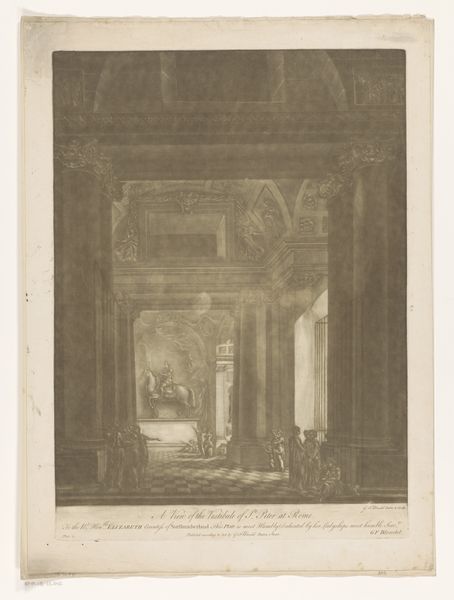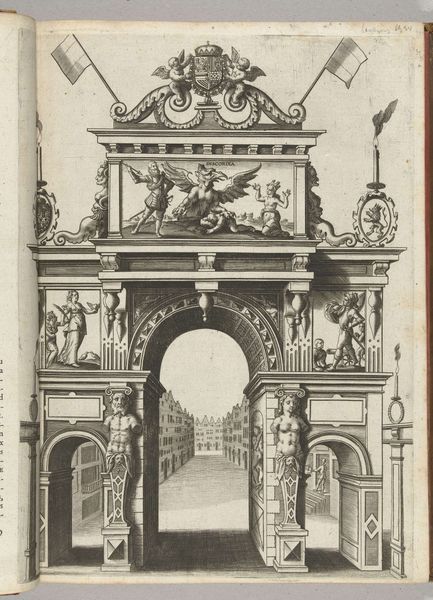
A Reconstruction of the Arch of Titus (above) and a View of the Ruins (below) 1690 - 1704
0:00
0:00
Dimensions: 13 1/8 x 8 1/4 in. (33.3 x 21.0 cm)
Copyright: Public Domain
Curator: Looking at this rendering, there's a real feeling of the weight of history pressing down, even though it’s a delicate drawing. The ghostly gray washes create such a somber mood. Editor: Indeed. What we see here is Jan Goeree’s "A Reconstruction of the Arch of Titus (above) and a View of the Ruins (below)," created sometime between 1690 and 1704. It combines drawing and engraving techniques. And what a subject he chose—the Arch of Titus. Curator: The artist is clearly making a statement by juxtaposing the reconstructed arch above and the ruins below. He's pointing to how empires rise and fall, their monuments eroding over time, but always being rebuilt again and again in collective historical memory. Editor: Precisely. Consider the cultural and political context: Europe in the late 17th century was consumed with antiquity and its lessons for contemporary power. Grand Tour travelers flocked to Rome. Goeree presents us with a visual argument about power and remembrance. The inscription at the top clearly tells us the arch is "To Titus son of the divine Vespasian," highlighting dynastic succession. Curator: Yet the cupid or cherub standing between the levels with that placard— it seems to mourn, rather than celebrate the hubris that underlies this whole concept of dynastic legacy. It feels like the ruin is romanticized in this image and maybe is actually critiquing Rome. Editor: An astute reading! He might be suggesting that power is fleeting and corrupting, hence, ultimately futile. Even this memorial to a conquering emperor is, itself, subject to time. And this image exists at a moment in time when architecture in the Neo-classical form was at its height. This shows how architecture is intrinsically tied to politics of power and is about claiming authority and solidifying ideology. Curator: The architectural depiction becomes a way of engaging with and critiquing those histories. Editor: I'd agree. A fascinating confluence of historical reverence and subtle questioning. Curator: Exactly, that’s why it leaves you with so much to think about.
Comments
No comments
Be the first to comment and join the conversation on the ultimate creative platform.
